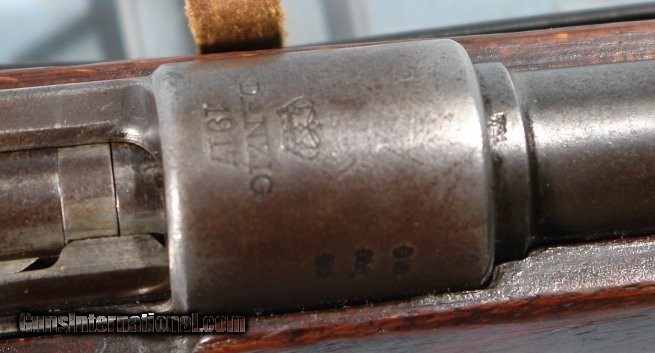

The bolt has gas vent holes that are designed to allow the hot gases to pass away from the shooters face and into the magazine opening in the case of cartridge case or primer rupture. On the K98k the bolt handle is bent downwards, which allows for more comfortable carrying and bolt operation. 98 rifles it was straight and located horizontally when the bolt was in the closed position. The bolt handle is rigidly attached to the bolt body. The bolt has three locking lugs, two at the bolt head and one at the rear part of the bolt. The Mauser bolt is a simple, extremely strong and well thought out design. the magazine could be unloaded by operating the bolt (safety must be in the middle position!) or by removing the magazine floorplate (not recommended). After loading, the empty clip is ejected automatically when the bolt is closed. Each clip holds 5 rounds, enough to fill the magazine, and is inserted into the clip guides, machined into the rear receiver bridge. The internal magazines could be topped either with single rounds, by pushing rounds into the receiver top opening, or via the use of stripper clips.

The magazine is a two-row, integral box, with quickly detachable floorplate. The magazine and bolt action are the two most famous features of the model 98. The model 98 rifle is a manually operated, magazine fed, bolt action rifle. For the sake of compactness, here I will describe the basic German model only. The vast panoply of Mauser-type rifles could easily cover a number of pages. Most famous of these “foreign Mausers” are the Persian, Turkish, Czech VZ-24’s, Yugoslavian Mausers and a variety of others. Many versions of this design were licensed to other countries who built their own versions of the G98. This version appeared in 1935 and was manufactured until 1945 in large numbers not only by Germans, but also by numerous other countries under their occupation. This new bullet had much better long-range ballistic properties, so all sights were regraduated for the new ammunition.ĭuring the interwar period this fine design was slightly altered to become the K98k – ‘Karbiner Kurz’, or short carbine. This was a somewhat shorter, lighter and handier version of the original one. In 1904 the Germans were the first to introduce the new, “Spitzer” bullet (with pointed tip, instead of the older blunt, round-shaped tip). It was carried by Germans throughout the First World war, along with a carbine or shortened version, known as K98 (or Kar98, from Karabiner, German for “Carbine”). This rifle was created out of the experience gained from previous Mauser designs, and first appeared in 1898 as the standard German army infantry rifle. 98 or simply G98 (G = Gewehr, “Rifle” in German). One of these designs is undoubtably the famous Mauser model 1898 rifle, also known as Gew. Some of the earlier Mauser works became the standards against which all other designs are judged, even some 100 years after their introduction.

Some years after the war, the Mauser company was restored in West Germany and continued to build firearms, but mostly larger-caliber ones, like aircraft cannons. They continued to build very well thought-out and skilfully made firearms until the end of World War 2.

This company earned its excellent reputation in firearms making in the last decades of the 19th century. The Gewehr 98 Rifle was invented by the Mauser company, established by the two brothers Peter and Paul Mauser.


 0 kommentar(er)
0 kommentar(er)
